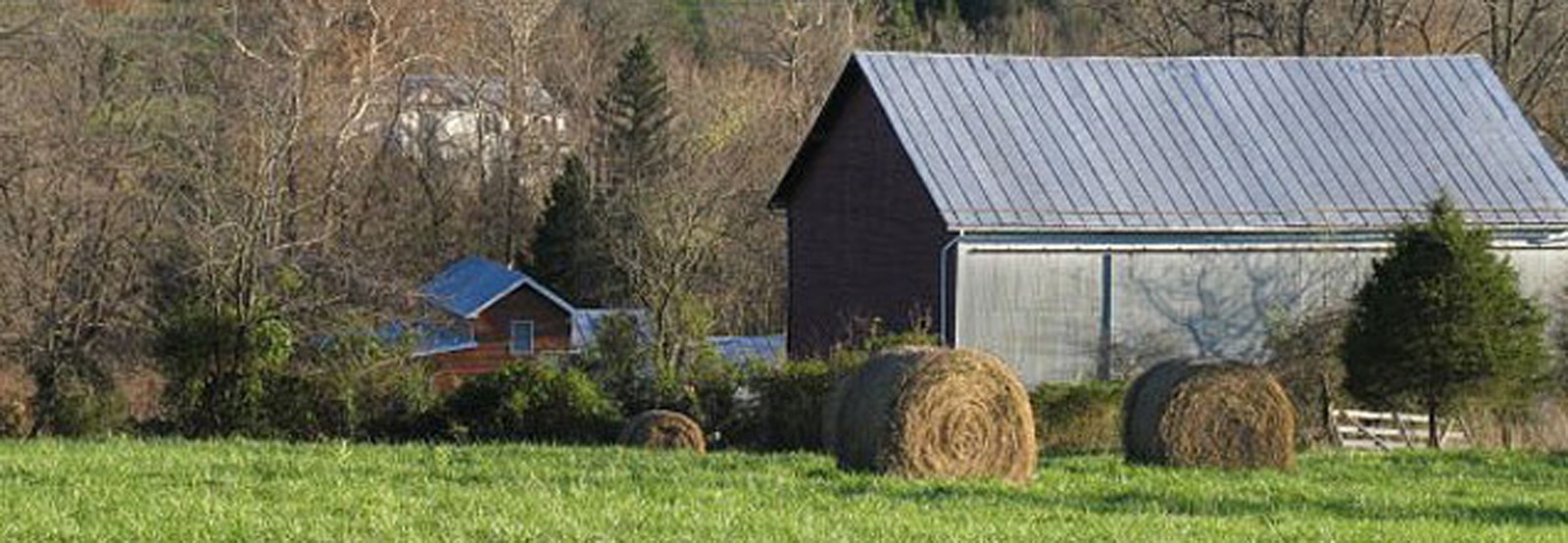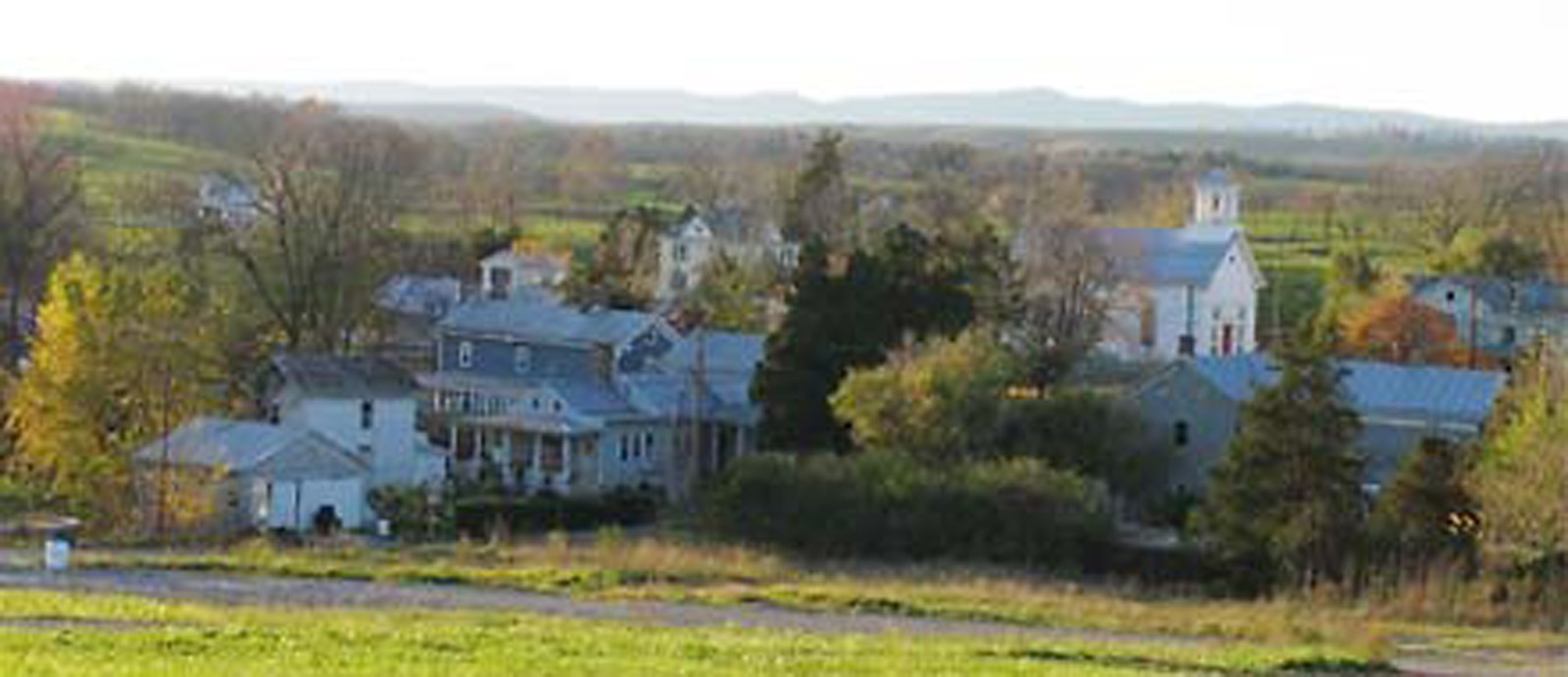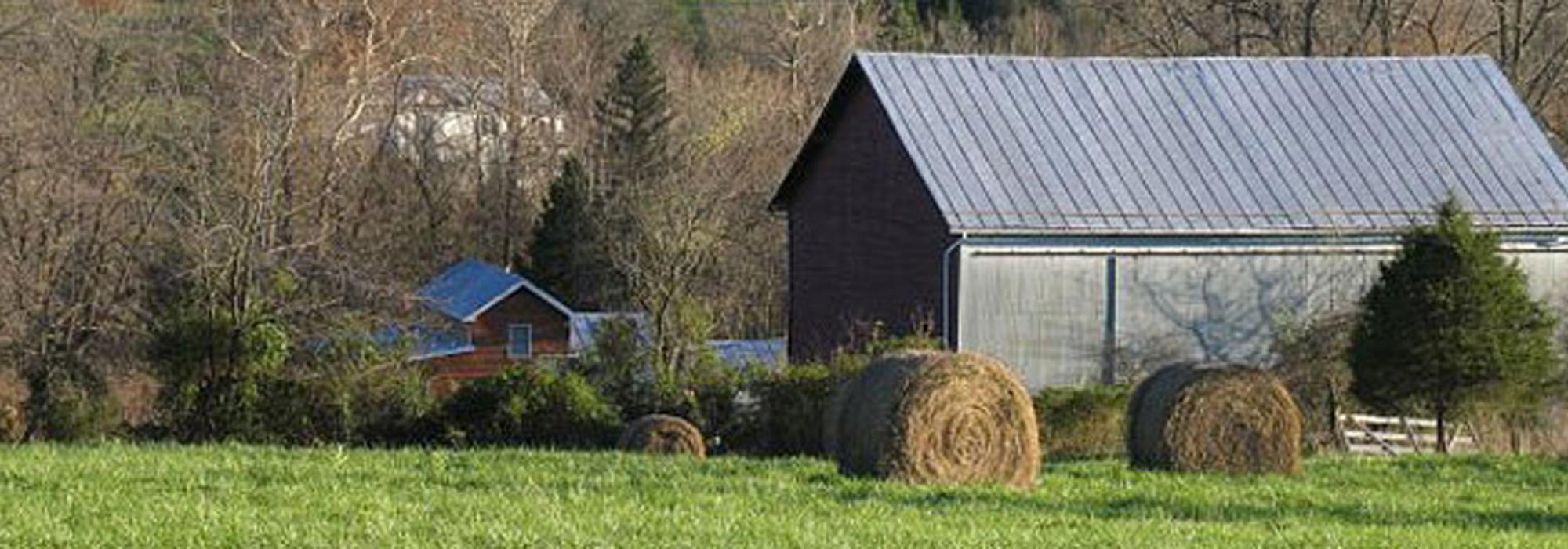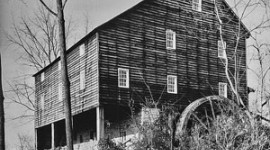Zirkle Mill

In 1755, five brothers of the name of Zirkle migrated south from Pennsylvania and settled in the Shenandoah Valley. There, on property once part of a land grant from Thomas Lord Fairfax, Andrew and his brothers constructed a grist mill (c. 1760-1770).
The war of the Revolution soon came and the Zirkle brothers took part. Brothers Michael, Andrew and Peter joined the Dunmore County Militia, Brother George Adam joined the Fredericktown Militia in Maryland and Brother Lewis became a soldier in the Continental Army. Michael, Andrew, Lewis and Peter have been recognized as patriots by the Daughters of the American Revolution. Michael, Andrew and Lewis have been recognized as patriots by the Sons of the American Revolution. The Zirkle brothers contributed to the cause in other ways as well, using the Andrew Zirkle Mill to aid the fight for independence (In The Dunmore County Committee on Safety Minutes lists the Zirkles' contributions to the cause of Independence). In his book "A History of Shenandoah County", Dr. John W. Wayland recounts that flour from this mill was taken north to relieve the poor of Boston who were surrounded by the British Army.
The mill has a noted Civil War History, too. In the Battle of New Market, the Virginia Military Institute's soldiers turned the tide of the battle and swept the field; the Union army retreated north through the Shenandoah Valley. General Sheridan gave the order that everything was to be burned to destroy the breadbasket of the Confederacy. Historian John Heatwole, in his book "The Burning: Sheridan in the Shenandoah Valley ", relates the tale how the Andrew Zirkle Mill was saved from destruction:
"The hamlet of Moore 's Store on Holman's Creek was a charming little settlement that had slept quietly during the war until Custer's men descended upon it. Nothing on Joseph Moore's farm was left untouched, perhaps because he was a well-to-do southerner and slaveholder. Every building, including the house was put to the torch. The Moores lost everything they owned, save for the land, haven been given no time to rescue any possessions. The old Moore Mill, which had stood for three score years and longer, was also burned to ashes. That night Moore, his wife Virginia, and their five children had to seek shelter elsewhere.
A littler farther down Holman's creek, which flows to the east, was a grist mill, sawmill, and several homes of the people of the name of Harpine. On this morning, Harpinetown lost both of its mills and all of its barns to the fires set by the Northerners. Another half mill downstream was Peter Meyer's mill, which at fourteen years of age was relatively new compared to most Valley mills. It did not reach the age of fifteen. The Myers barn, also doomed, was so close to the house that the window sills became too hot to touch.
A quarter of a mile beyond, Samuel Hockman ran the old Andrew Zerkel mill in the village of Forestville. Looking upstream, Hockman saw the smoke rising from Harpinetown and from Meyer's mill. Thinking quickly, he ran to the top floor of the mill, leaned out a small window under the eaves of the structure, and nailed a United States flag to the peak of the roof. He hurried back downstairs to meet the Union officer and his squad, who approached briskly from the west. Standing before the group he told them how happy he was to see them and professed his loyalty to the flag. When they saw the Stars and Stripes so visibly displayed on the mill, they were convinced of his sincerity. The officer waved his men away from Hockman's mill, making it the only one spared along the creek that day."
The General of the Union Calvary under Sheridan was none other than George Armstrong Custer. History has indeed touched this mill.
In the late 1890's, the mill's machinery was updated, and boasted the latest in roller milling technology. This equipment is still in the mill and said to be one of the finest examples existing to date. A number of owners worked the mill and it passed in and out of Zirkle family members' hands several times. Each owner tried his hand at grinding grain for farmers, making flour and apple cider.
The mill was in operation from 1760 until the 1950's when it was retired, no longer able to compete with modernized factories. Its service life of 190 years is extraordinary for a mill of its type. Ownership of the mill has passed through many hands over the years, each of the owners having visions of successful businesses, of restoration, of preservation.
In 1980, the mill was purchased by Glen Hofecker, a carpenter from North Carolina. Over the next two years, Hofecker restored the mill, replacing the weatherboard siding and constructing new windows from scratch. In 1982, he gave Blair Zirkle, Jr., Zirkle Family Historian his permission to submit the Andrew Zirkle mill to the Virginia Landmark Registry and the National Register of Historic Places. In late 1982, the mill was added to the Virginia Landmark Register. In 1983, it was added to the National Register of Historic Places.
In 1996, Mr. Hofecker sold the mill at auction and it was purchased by Bowman Fruit Sales, LLC of Timberville, VA.
Threat
The mill is now the subject of a fierce preservation fight between concerned citizens, Zirkle family members and the Frontier Culture Museum, a Virginia State Agency.

In September of 2004, the Museum announced plans to purchase the wood portion of the Andrew Zirkle Mill structure and that they would transport it to museum grounds in Staunton, Virginia, a distance of approximately 50 miles. The mill had been for sale for approximately one year without it being sold.
Local residents were aware that the property was up for sale, but few of them had the funds to purchase the mill and none of them thought that the owner would allow the mill to be moved from its home of 240 years.
Concerned citizens and residents immediately formed the Zirkle Mill Foundation in an attempt to save the mill. They raised $220,000 in loan guarantees and donations which they offered to Bowman Fruit Sales, LLC. The managing partner, Gordon D. "Sonny" Bowman, turned down the Foundation's offer stating that he thought the best long term interests of the mill were served by selling the mill to the museum. The museum says its goal is preservation of the structure. However, on May 21, 2005 the Association for the Preservation of Virginia's Antiquities, the foremost preservation group in Virginia and owner of the Jamestown Settlement, placed the Andrew Zirkle Mill on its list of the most endangered historical sites in Virginia.
One of the major points of contention in the preservation fight is that the Museum was a state agency and that it should not be taking historic structures for its own use unless the structure was in physical danger. And of course, this is not the case with the Andrew Zirkle Mill.
Another point of contention is that there are a myriad of laws and procedures that govern the acquisition, dismantling and construction of buildings by the state. There are additional laws that govern buildings that are historical structures. The preservationists argued that the laws were being ignored and the administration was allowing this to happen. The museum routinely stated that the purchase was funded by a private entity and that the laws did not apply.
Finally, a State Delegate filed a written request with the State Attorney General to determine whether or not state law was applicable in the sale and subsequent relocation of the Zirkle Mill to the Frontier Culture Museum grounds in Staunton. On May 24, 2005, the State Attorney General ruled that the Frontier Culture Museum must have the Governor's approval to purchase and reassemble the mill on the museum's property.
Within days of the State Attorney General issuing her ruling, the [Department of Historic Resources] State Review and Historic Resources Boards met in their quarterly joint meeting at Monticello in Charlottesville. During the meeting, a presentation was made by two Forestville residents regarding the designation of an Historic District for the Village of Forestville. The consensus of the two boards was that a recommendation to proceed with the process to create an Historic District in Forestville should be approved, provided that the Zirkle Mill remains in Forestville, as part of the Historic District.
The Save the Zirkle Mill Foundation has been working tirelessly to preserve the mill in its current location.
In mid-July, Governor Warner issued his decision to deny the Frontier Culture Museum 's request to purchase and move the Zirkle Mill to Staunton.
However, we still need to convince the current owner, Gordon "Sonny" Bowman, that the right thing to do is to sell the Mill to an organization that can preserve and protect it in its current location for future generations to enjoy. Mr. Bowman is of the opinion that the community at large has little interest in the issue of preserving the Mill in Forestville, with the exception of "a small group of preservationists". His perspective is that in the short term, this "small group of preservationists" is behind the effort to preserve the Mill, but in the long term, the Mill will be forgotten and left to deteriorate due to lack of support and funding. The Save the Zirkle Mill Foundation (SZMF) is dedicated to preserving and protecting the Zirkle Mill in Forestville for the long term, and we need your help in convincing Mr. Bowman that the community at large supports the efforts of the SZMF.
As 8th generation descendants of Michael Zirkle, Andrew's older brother, we recognize the importance of not only preserving our family history, but America 's history as well.
How to Help
Please write a letter supporting the SZMF and its goal of preserving of the Zirkle Mill in Forestville. We will make sure that your letter is forwarded to Mr. Bowman. Send your letter of support to:
Save the Zirkle Mill Foundation
15651 Andover Heights Dr.
Woodbridge, VA 22193
savethemill@rbais.com
http://www.savethezirklemill.com
Updates
June 28
The Shenandoah County Board of Supervisors passed a resolution in support of the Zirkle Mill remaining in Forestville
June 1
The Dept. of Historic Resources endorsed approval of the initial application to designate the Village of Forestville as an Historic District (provided that the Zirkle Mill remains in its current location)
May 21
The Zirkle Mill was included on the Association for the Preservation of Virginia Antiquities' (APVA) List of the 11 Most Endangered Sites in Virginia
May 20
The State Attorney General issued an opinion that the Governor must give his permission for the Frontier Culture Museum to purchase and relocate the Zirkle Mill to FCM property in Staunton





